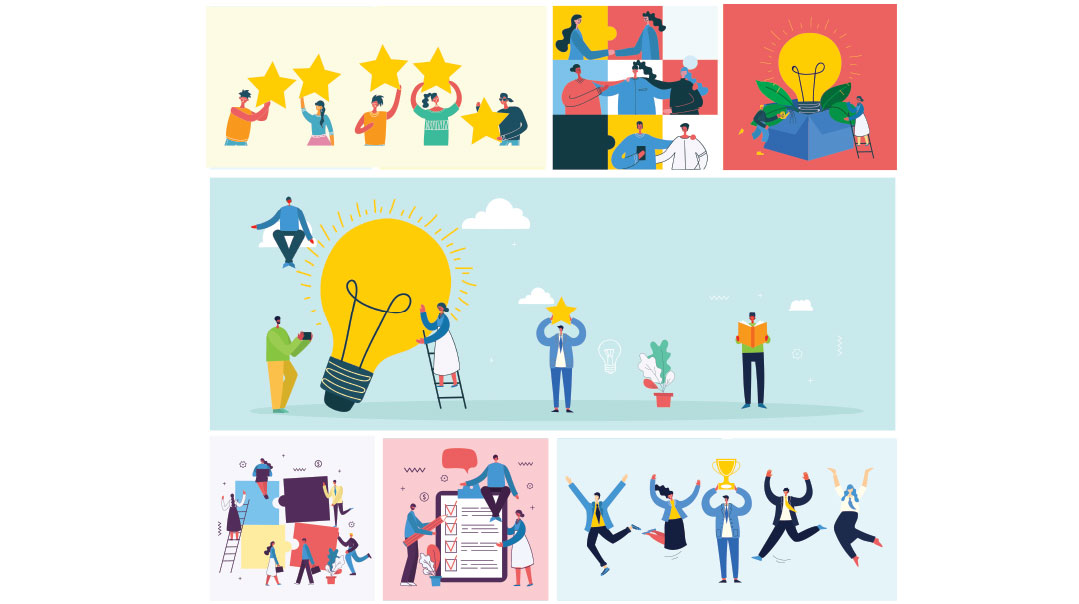A Wise Mind

“Who cares about not getting into power struggles? This is an emergency and I have to solve it — now!”

W e’ve all had the experience of acting from our emotions. We yell we withdraw we engage in harmful behaviors like overeating. Then we’re stuck with the resulting mess like distanced relationships loss of self-esteem and guilty feelings — not to mention that we still haven’t dealt with the original problem. We resolve never to act that way again… until the next time when flooded with emotion we revert back to our “go to” reaction.
In theory we know we can grow even transform ourselves — that’s the whole premise of teshuvah. But in practice we’re often left wondering How do I get from here to there?
Dialectical behavior therapy (DBT) was created to help people do just that. It not only equips people with skills to break out of their old patterns and develop new ones it also teaches people how to use these techniques even when they’re feeling a torrent of emotion.
And it works. Marsha Linehan the creator of DBT was just selected as the 2017 Grawemeyer Award winner for her contribution to psychology. Time magazine included DBT as one of the 100 New Scientific Discoveries in 2011 describing it as “a treatment with evidence of efficacy that works and gives hope for clients.”
Almost 25 years of research has shown DBT to be effective for previously untreatable conditions characterized by impulsivity interpersonal problems and self-destructive urges (such as borderline personality disorder) as well as eating disorders anxiety depression substance disorders and trauma. It’s also the “gold standard” therapy for suicide and self-harm. One of the most important developments in DBT over the past ten years is DBT-A (for adolescents) which helps teenagers stop risky and self-harm behaviors as well as improve difficult relationships with parents and peers.
DBT isn’t just for problems; it’s also for prevention. Schools across the country — including Bet Yaakov of Jersey Shore in Deal where I teach DBT Skills programs when I’m not running my private practice — are offering DBT Skills training as a regular class to all middle school and high school students not only “problem” ones. In these classes teens prepare to deal with stressful situations (for example a fight with a best friend too many assignments in too little time) and intense emotions (like anxiety anger shame). Instead of flipping out and then acting out (saying nasty things cheating on a test drinking etc.) teens learn to problem-solve (for instance finding a solution that both they and their friend are happy with or learning how to organize their time better).
At first glance issues like impulsivity eating disorders personality disorders substance abuse anxiety and depression seem very different some even opposites. But they all have a common thread: out-of-control emotions which make a person either act imprudently or shut down. The goal of DBT is to learn how to process intense overwhelming feelings so we can respond in an emotionally healthy way instead of slipping into a downward spiral of destructive thoughts feelings and actions.
Amygdala Hijack
Even when we consciously want to act one way (stay calm explain our point clearly say no) we sometimes do the exact opposite (yelling eating chocolate cake caving in). What happens from point A to B that leads to the disconnect between what we want to do and what we actually do?
DBT teaches that your mind has three ways of operating: Emotion Mind (emotions control your thoughts and actions) Reasonable Mind (logic and facts control your thoughts and actions) and Wise Mind (emotions and logic work together to control your thoughts and actions).

Let’s say for instance that your sister criticizes your housekeeping. Your experience of her comment first occurs in your brain’s emotion center the amygdala. You then react emotionally maybe with anger as in “How dare she!” or with shame as in “I’m a mess ” or with actions as in eating half a chocolate cake yelling at your sister or responding in any other way to numb your pain. Afterward you’re left with the same problem (a messy house feelings of anger and shame) plus new ones (all of the above + fight with your sister + weight gain + guilt about your other actions + feeling bad about yourself).
When you’re stuck in this part of the brain experts call it an “amygdala hijack ” or in DBT terms you’re stuck in Emotion Mind with your negative feelings your impulsive actions and all the resultant problems.
What if you don’t get stuck in your emotions? Then your brain sends messages to your prefrontal cortex your brain’s logic center which by definition reacts logically to the situation — e.g. “I have a bunch of pots soaking in the sink from Shabbos. My floors aren’t clean. I was too busy with other things — taking care of the kids and helping my husband — to get the house back in shape.”
Note the lack of emotion — it’s all about facts. If you act on only your Reasonable Mind and try to ignore or dismiss your Emotion Mind you may not feel regret at the moment but you’ll most likely be stuck with your negative emotions festering under the surface waiting to explode in the near future.
Ideally your brain won’t stop at the Reasonable Mind — contrary to popular belief pure logic and reason are not our ultimate goal. Instead the prefrontal cortex and the amygdala need to communicate with each other. This is what DBT calls Wise Mind because it combines the benefits of emotion with those of logic and helps a person make wise effective choices based on both parts of the mind. It’s the “Aha!” moment when we hit the balance between our emotions and our reason and we find a solution that our intuition tells us has a good chance of working.
For instance your Wise Mind might tell you “It feels bad that my house isn’t always perfectly clean and I don’t like my sister’s comments (emotion). At the same time if I keep my house as clean as my sister’s I’ll have less time with my children and husband (+ logic). I know I’ll find a moment when they don’t need my attention and then I’ll work on those pots (= Wise Mind a decision based on both emotions and the facts).”
Wise Mind can’t work without emotions — that’s because emotions serve a vital purpose: They give you information that your reasonable mind might miss. You’re also more motivated when you have an emotional stake in something. Additionally if you say something in a nonemotional tone of voice even if you say it’s urgent or really important to you the listener won’t take you as seriously as they would if you’d said it with emotion. People read your tone of voice facial expressions and body language more than they listen to your exact words.
Let’s look at another scenario: Your 12-year-old daughter’s skirt is too short. She refuses to stop wearing it because it’s her absolute favorite and tries to convince you that if she sits and moves in a certain way it’ll be okay. This is what your internal dialogue might look like:
Emotion Mind: “She needs to give away that skirt immediately! She has to follow halachah! She’s going off the derech — I have to stop her!”
Reasonable Mind: “Her skirt is too short. Getting into a power struggle will only make things worse.”
Emotion Mind (interrupting): “Who cares about not getting into power struggles? This is an emergency and I have to solve it — now!”
Imagine if the internal exchange stopped here and you responded impulsively. How effective would it be — and how much repair work would be required to fix all those hasty words and actions?
If you instead accessed your Wise Mind it might sound something like this: “I need to teach my daughter why this is so important (emotions) and show her why her skirt needs to be longer without anger or panicking (+ reason). I need to do this in a way that she’ll listen and it won’t hurt our relationship — I’ll first validate her feelings and recognize that it’s hard for her to give up a favorite skirt then I’ll speak sincerely about why it’s so important to wear skirts that are an appropriate length and then I’ll suggest adding on to her skirt or finding a new one she loves just as much” (= Wise Mind where you take everything into consideration — your wanting your daughter to keep halachah your daughter’s wanting to keep her skirt and your wanting to maintain a good relationship).
Six Ways to Develop the Wise Mind
If you’re like many of my clients you’re probably thinking I’m supposed to think logically when my feelings are raging and I’m stuck in Emotion Mind? Really?? And the answer is Yes really!
To move from Emotion Mind to Wise Mind DBT offers six mindfulness skills divided into three What skills (what you do) and three How skills (how you do the What skills).
The What skills are Observe (your emotions, thoughts, and urges, as well as what you can perceive about the other person), Describe (put your observations into words), and Participate (throw yourself into what you’re doing so you’re completely absorbed in what’s happening and are simultaneously aware of what you’re feeling while it’s happening).
The How skills are One-Mindfully (the goal is to be in the present — not sad/angry/ashamed about the past, nor anxious about the future), Nonjudgmentally (there should be no analysis or judgment; focus instead on the facts you perceive with your five senses), and Effectively (before you speak or act, think about whether it will help you reach your end goal).
In the skirt example above, “you” were able to get out of Emotion Mind by observing and describing your emotions, thoughts, and urges — anxiety that your daughter didn’t care about halachah, thoughts that it was an emergency so she should immediately throw out the skirt, and urges to follow through on your impulse, thereby ignoring what you know to be true: Power struggles usually make things worse.
You were then able to distinguish between what you thought was going on (an emergency requiring yelling) and what actually was going on and what you needed to do (explain yourself calmly to your daughter). You were also participating by fully immersing yourself in the moment.
Putting the What and How skills together, you were being consciously one-mindful — you looked at the situation in the moment versus worrying that in the future your daughter would go OTD or focusing on how in the past your niece had. You also operated from a nonjudgmental place, focusing on just the facts at hand. You didn’t let your mind wander to judgments like “I’m a failure as a parent” or “my daughter is rebellious and ungrateful.”
Because you had an end goal in mind — your daughter keeping halachah and maintaining a good relationship with her — you effectively came up with a solution that both you and your daughter could be happy with and feel good about.
It’s important to clarify that once you’ve identified a thought as judgmental (or an interpretation or an assumption), being mindful does not mean that you automatically dismiss it — that wouldn’t make sense, because we’re supposed to make judgments, interpretations, and assumptions. The key is to be mindful that you are making a judgment.
Start by describing the judgment — for instance, “my daughter doesn’t care about halachah” — and then decide whether your judgment fits the facts. If it does, problem-solve! If not (for instance, you see that aside from the too-short favorite skirt, your daughter keeps halachah in every other way), then let go of your anger, frustration, and anxiety. The true gift of being nonjudgmental is that it helps you solve problems that really exist — and avoid the suffering that’s caused by phantom problems.
The “D” in DBT
Many people ask me what DBT means and when I answer, “Dialectical Behavior Therapy,” they respond, “Well, what does that mean?” Dialectical means taking two ideas or two needs or two opinions that seem completely opposite and finding a way to put them together, or synthesize them. It’s not the same as a compromise where both people feel they gave in; in other words, a lose-lose situation. A synthesis gives a win-win outcome.
For example, you want to bring all of your children to your sister’s Shabbos sheva brachos so they can spend time with their cousins, and your husband wants to leave them all with his mother, because he didn’t think it worked out well during your brother’s bar mitzvah Shabbos. If you compromise and bring half your children, chances are neither of you will be happy. If you get angry that he doesn’t care about your children’s relationship with your family and don’t speak to him for three days, that won’t lead to a win-win situation either. If you keep trying to convince him why you’re right and he does the same, you’ll inevitably escalate into a fight or someone giving in and feeling resentful.
If, however, you use your mindfulness skills to stay in Wise Mind and then work to find a synthesis — where your need for bringing the kids and his need to not bring the kids are both honored — you have a good chance of finding a solution that works for both of you.
Start first with the “What” skills of observing and describing your anger, which is fueled by the judgment that he doesn’t like visiting your family. Did he actually say that? If not, then it’s actually good news — you can throw away that infuriating judgment and not get hijacked by emotions that you don’t even need to have. What if your judgment is correct and your husband doesn’t like visiting? By getting into Wise Mind and asking him why he doesn’t want to bring your children, you’ll be able to meet this challenge head-on.
Resolving things dialectically requires stepping into the other person’s mind. When there are conflicting views or needs, ask yourself, “What am I missing?” or, “Why is my husband thinking so differently from me?” You don’t have to agree with him, but to reach a win-win solution, you need to at least understand his perspective. You might start a dialogue that goes like this:
You: “I know the kids will have an amazing time. What am I missing about why you disagree?”
Your husband: “They all get wild and end up fighting. Then your mother lays in, telling me that I don’t know how to discipline.”
You (synthesizing): “Let’s figure out how our kids can spend time with their cousins in a way that doesn’t lead to wild behavior or fighting. How about if we organize more activities, bring games, books, and extra nosh, and I’ll speak to my sister about everyone going to bed earlier? And if my mother says something to you, I’ll talk to her.”
Your husband (feeling that his perspective was included): “Okay. Let’s try.”
It’s a win-win-win: You’re happy + your husband is happy + your relationship benefitted because you both feel good that your opinion and perspective was taken into account.
Thinking dialectically can also improve your self-esteem because it turns your inner critic into an inner coach. How? By viewing two opposing ideas in your mind through the lens of “Both-And” instead of “Either-Or.” For example, instead of “Either I’m a perfectly calm mother or I’m a horrible mother,” your dialectical self-image can be: “I’m a loving mother and at the same time I have to stay calmer during the morning rush.” Or instead of “Either I make this sale, or I’m a loser,” a dialectical self-acceptance would be “I didn’t make this last sale and at the same time I made three sales yesterday.” Or even, “I didn’t make any sales yet and at the same time I am learning from my mistakes, which is what good salespeople do to succeed.”
Don’t worry if all these steps sound like a lot at once. Some of my clients feel overwhelmed when they hear about all the mental agility required to get into Wise Mind. I tell them to think of it as learning a dance. First you learn each step (two steps right, then twirl), and then you learn the hand movements (down, down, up). After practicing it over and over and over, all the steps come together and fuse into a new entity — a happier, more confident you, who is capable of managing life’s challenges, even the seemingly insurmountable ones.
Nina Kaweblum, LCSW, DBT-LBCTM, is a Linehan Board Certified DBT therapist with a private practice in Lakewood, New Jersey, for adults and adolescents. Mrs. Kaweblum is also intensively trained in DBT-PE and EMDR for trauma. She consults with schools to implement DBT into their programs.
ABCs of DBT
- When should I consider DBT therapy?
- If you answer yes to any of the following questions, DBT therapy can help:
- Do my emotions get out of control?
- Do I act impulsively, even when I’m trying to stop?
- Have I been diagnosed with BPD, PTSD, addiction(s), or mood disorders?
- Do I have a hard time controlling my eating?
- Do I think of suicide? Do I self-harm?
- Did I have trauma in my life?
- Have I always felt invalidated by others?
- Do I have problems with my relationships?
- What can I expect to get out of it?
In DBT therapy, you’ll learn:
- what your core issues are, and how to resolve them;
- how to gain control over your impulses, painful thoughts, and emotions;
- how to manage conflict and to get your needs met (including setting limits) in a way that keeps your relationships and your self-respect intact;
- techniques to enhance problem-solving and decision-making;
- a step-by-step process for both learning the skills and making them into lifelong habits.
- For those with trauma, DBT-PE (prolonged exposure) relieves your PTSD symptoms and helps you stop feeling afraid.
Through telephone coaching in between sessions, you’ll get:
- support and encouragement when you need it the most;
- the ability to use your newfound skills in the heat of a moment or in the middle of a crisis.
How can I find a good DBT therapist?
You want someone who’s well trained in DBT and actually follows the procedures. Why this is so important: Research shows that DBT is most effective when all the protocols are followed. DBT-Linehan Board Certified therapists have met Marsha Linehan’s rigorous standards, meaning you can rely on a certified DBT therapist to give you DBT therapy in the most effective form. To find a DBT-Linehan Board Certified therapist, Google https://dbt-lbc.org, scroll down, and click on Find a Certified Clinician. To find an intensively trained therapist, Google behavioraltech.org and click on Resources for Family and Friends.
You should also ask a therapist the following questions before you set up a DBT appointment — and the first five answers should be yes:
- Are you a member of a DBT consultation team that meets weekly?
- Have you been supervised by an expert DBT therapist?
- Do you follow the DBT procedures?
- Do you do phone coaching?
- (For teens) Do your teen clients learn the skills together with their parents?
- How many clients have you treated using DBT?
(Originally featured in Family First Issue 539)
Oops! We could not locate your form.












